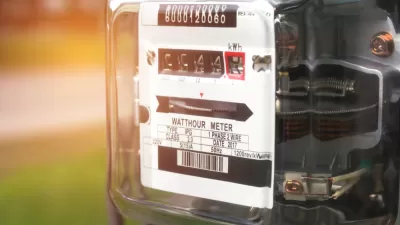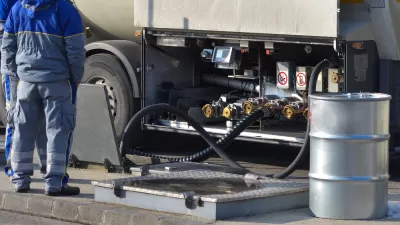Beginning last year, states increased gas taxes and entered public-private partnerships, as are some cities. But it's not an easy haul for cities nor states, and Congress has yet to agree how to furnish sufficient revenue to match current spending.
"Before this burst, no state had raised its gas tax for nearly four years, according to the Institute on Taxation and Economic Policy (ITEP), a nonprofit research group," writes Josh Mitchel. The first state to break the gas tax increase freeze was Wyoming.
See ITEP's publication, "How Long Has it Been Since Your State Raised Its Gas Tax?" to see a chart that shows (as of April 1, 2014) "the number of years that have elapsed since each state’s gas tax rate was last increased." Alaska is the champion at almost 44 years.
More common is the use of public-private partnerships, also referred to as P3s, for specific projects that governments might otherwise be unable to finance.
Crimped for funds, a slew of cities and states such as New York, Texas and Indiana are teaming up with private companies to build roads, bridges and other public projects, moving into zones once funded by gas-tax dollars or traditional state bonds. These partnerships replicate a model long practiced in Europe, with private firms putting up initial funding in exchange for future guaranteed payments, through toll revenue or other sources.
FULL STORY: States Raise Gas Taxes to Pay for Infrastructure

Study: Maui’s Plan to Convert Vacation Rentals to Long-Term Housing Could Cause Nearly $1 Billion Economic Loss
The plan would reduce visitor accommodation by 25,% resulting in 1,900 jobs lost.

North Texas Transit Leaders Tout Benefits of TOD for Growing Region
At a summit focused on transit-oriented development, policymakers discussed how North Texas’ expanded light rail system can serve as a tool for economic growth.

Why Should We Subsidize Public Transportation?
Many public transit agencies face financial stress due to rising costs, declining fare revenue, and declining subsidies. Transit advocates must provide a strong business case for increasing public transit funding.

A Visual Celebration of Manhattan’s Chinatown Elder Community, Through Food
Lanterns, cafeteria trays, and community connection take center stage in this stunning photo essay.

How to Make US Trains Faster
Changes to boarding platforms and a switch to electric trains could improve U.S. passenger rail service without the added cost of high-speed rail.

Columbia’s Revitalized ‘Loop’ Is a Hub for Local Entrepreneurs
A focus on small businesses is helping a commercial corridor in Columbia, Missouri thrive.
Urban Design for Planners 1: Software Tools
This six-course series explores essential urban design concepts using open source software and equips planners with the tools they need to participate fully in the urban design process.
Planning for Universal Design
Learn the tools for implementing Universal Design in planning regulations.
City of Santa Clarita
Ascent Environmental
Institute for Housing and Urban Development Studies (IHS)
City of Grandview
Harvard GSD Executive Education
Toledo-Lucas County Plan Commissions
Salt Lake City
NYU Wagner Graduate School of Public Service




























